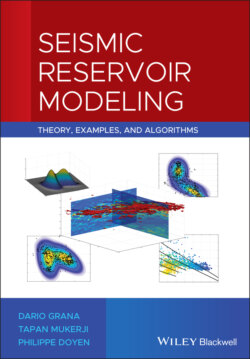Читать книгу Seismic Reservoir Modeling - Dario Grana - Страница 12
1 Review of Probability and Statistics
ОглавлениеStatistics and probability notions and methods are commonly used in geophysics studies to describe the uncertainty in the data, model variables, and model predictions. Statistics and probability are two branches of mathematics that are often used together in applied science to estimate parameters and predict the most probable outcome of a physical model as well as its uncertainty. Statistical methods aim to build numerical models for variables whose values are uncertain (e.g. seismic velocities or porosity in the subsurface) from measurements of observable data (e.g. measurements of rock properties in core samples and boreholes). Probability is then used to make predictions about unknown events (e.g. porosity value at a new location) based on the statistical models for uncertain variables. In reservoir modeling, for example, we can use statistics to create multiple reservoir models of porosity and water saturation using direct measurements at the well locations and indirect measurements provided by geophysical data, and then apply probability concepts and tools to make predictions about the total volume of hydrocarbon or water in the reservoir. The predictions are generally expressed in the form of a probability distribution or a set of statistical estimators such as the most‐likely value and its variability. For example, the total fluid volume can be described by a Gaussian distribution that is completely defined by two parameters, the mean and the variance, that represent the most‐likely value and the uncertainty of the property prediction, respectively. Probability and statistics have a vast literature (Papoulis and Pillai 2002), and it is not the intent here to do a comprehensive review. Our goal in this chapter is to review some basic concepts and establish the notation and terminology that will be used in the following chapters.
